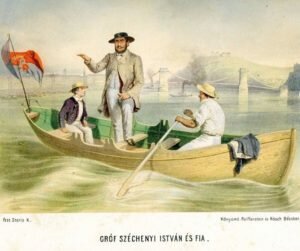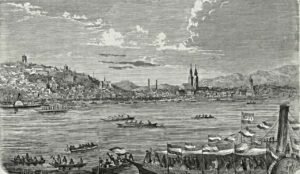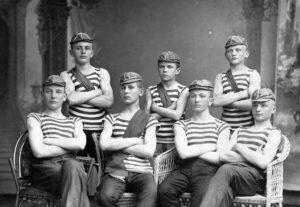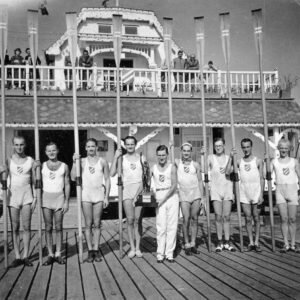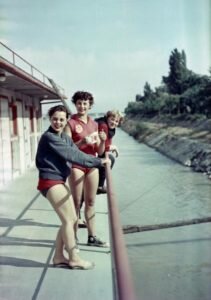Regatta – a word that exists in the Hungarian language for more than 170 years
The word regatta has Italian roots, it has been used already in the 1400s for the gondola
races in Venice. However, in the German areas it had the meaning of “the same”, which later
might refer to the racing boats starting nose to nose. Count István Szécheny, the founder of
Hungarian rowing brought this word from England to Hungary together with nice wooden
boats. The first regatta was held here on the Danube on the 19 th of March in 1843, what the
Count recorded in his diary in German:
„Regatta wo Béla und Clark gewinnt gegen Gondel”- say: regatta, where Béla and Clark won
against Gondel. The boat was called Béla, named after the son of Széchenyi and Clark is
Adam Clark, the Scottish architect of the Lánchíd, the first bridge in Budapest.
This was the last regatta for the Count but not for Hungary. In the following articles we will
present some of the most famous Hungarian races and racers as well the rowing life in the
good old times.
The Hungarian Etymological Dictionary published in 2013 discussed the word regatta as “an
expression in the language of sport which is on the path of extinction”. So, this special word
owes its survival in the Hungarian language to the Budapest Cup Regatta for a while.
(By Zita Huszthy)
Back in the past rowers wear a short and a tank, those have become later the unisuit. But Hungarian rowers could dress up such comfortably only from the 20th century. At the very beginning of the sport the rules were very strict. Short sleeves or legs were not allowed at all outside of the changing room. According to the regulation of the first club in Budapest from 1861: “During the training one must wear the uniform of the club, which means red shirt, blue navy suit and brown boater.”
Boat’s racing in 1864 (Source: OSZK)
Later the rules have become a little bit more permissive. Shorts and tanks were allowed in the boat and on the banks, but inside the club’s house one could show up only in the uniform: suit, shirt and long trousers.
The rowing dress itself meant a white tank with the coat of arms of the association.
The young members of the Szeged Rowing Club, 1910 (Source: Fortepan)
The Neptun Rowing club was quite strait in the question of outfit:
“That member who does not wear the uniform or dress up obscene, can be imposed a fine.” (1928)
Rowers in 1942 (Source: Fortepan)
Another club regulation from 1931:
In inhabited regions the members must wear long (black or dark blue) trousers and jacket or sweater. On the Danube in the centre of Budapest they must wear the rowing shirt. In uninhabited regions the cox can let the rowers to take off their shirts. If there are ladies in the boat, the shirt cannot be taken off.
Girls on the terrace of the Wesselényi-boathouse in 1955 (Source: Fortepan)
Nowadays the pieces of rowing clothes are comfortable and practical. However, the FISA still has a strict rule about dressing. The team must wear the same type and colour of headwear, which means for example all black headbands or all white cups. But don’t mix’em!
Rowers wearing ‘Borat-suit’ on the Night Row in Vienna (Source: Facebook)
by Zita Huszthy

